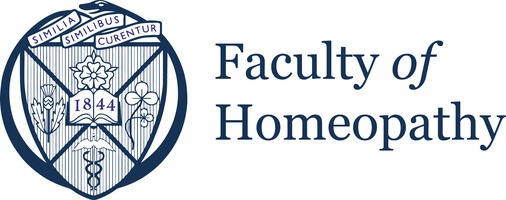IV (intravenous) therapy is a medical treatment that involves the administration of fluid directly into a patient’s vein via a device known as an intravenous cannula or catheter. This type of therapy has a long and varied history, with the earliest recorded use dating back to the 11th century. Although it was initially used to treat only severe illnesses and injuries, today, IV therapy is used to treat many common medical conditions, such as dehydration and nutrient deficiencies.
IV therapy, short for intravenous therapy, is a medical procedure in which liquid substances are administered directly into the bloodstream. This form of treatment dates back to ancient times and was almost exclusively used in medicine until relatively recently when private clinics started offering intravenous vitamin therapies. Though it is still commonly used in treatment today, many people now use IV therapy as an alternative form of healthcare and wellness.
IV therapy is a safe and effective way to deliver IV fluids, vitamins, minerals, and pharmaceuticals directly into the bloodstream via a thin tube placed in a vein near the patient's elbow or wrist. It enables what many call “intravenous nutrition”, therapies that replenish vital ingredients needed for optimal health and performance in those severely run down or suffering from chronic conditions such as fatigue. This delivery method optimizes nutrient uptake because it bypasses the body’s digestive system, which can weaken nutritional value due to improper absorption or too much time-lapse between ingestion and utilization.
The history of IV therapy dates back to the 1800s when scientists first used it to inject substances directly into the bloodstream. During this time, Salomon Schiff experimented with the fluids of animals and humans and concluded that substances could be injected directly into the bloodstream. This discovery led to the development of intravenous therapy, which has become a safe and common medical procedure.
IV therapy can be traced all the way back to ancient Greek and Roman times. During this era, people were unaware of how germs and viruses caused disease, so their treatments were relatively primitive. Nevertheless, these historical figures did have a few ways to deliver fluids to a patient in need, and the invention of IV therapy can be attributed to them.
The ancient Greeks practised what is known as "bloodletting," which was widely believed to reduce toxicity in the body. To do this, they often used cupping at various pressure points along the body then draining out some of the blood. This same method was used by Hippocrates in 400 B.C., with leeches sometimes taking the place of cupping.
The ancient Romans also used plant-based solutions like boiled herbs as cures for illnesses and as a way to inject fluids into their bodies when needed. They would combine these plant solutions with wine or other liquids before either drinking or inhaling them using a tube called a probylon or pneumograph–an ancestor of modern-day IV therapy! Later on, during medieval times medieval Europe continued these practices but adapted them with wood or leather tubing connected to spongy material filled with water or salt solutions and placed directly over veins in order to drain or reintroduce fluids into the body.
The use of intravenous (IV) technology first took root in the Middle Ages. During this time, healers recognized that certain substances, such as opium, could be injected directly into a person’s veins to provide relief. This early understanding spawned further development of IV infusion technology during the 18th and 19th centuries.
It wasn’t until the advent of disposable plastic catheters that modern IV therapy became possible. This breakthrough in medical technology allowed for long-term treatments without the risk of introducing microorganisms into the body and avoided inflammation and infection at the insertion site. This crucial innovation led to greater control over medication delivery times and dosages, reducing adverse side effects and discomfort for patients Anomalies associated with traditional syringe-based applications were all but eliminated by this addition to medical care devices.
Today, IV therapy remains a widely used form of treatment for many medical conditions, ranging from dehydration to drug overdose. It also is widely used for administering medications as well as bolus feedings in critically ill patients who cannot absorb nutrients orally or through enteral nutrition due to intestinal obstruction or disease states such as Crohn’s disease or acute pancreatitis.
IV therapy has seen tremendous advances in the past few decades. It is used to treat both acute and chronic medical conditions with varying levels of success. Modern IV therapy relies on sophisticated machines and medical expertise that allow medical professionals to provide treatments quickly, safely, and effectively.
Looking back into its history, let's explore how it has been used and changed over time.
During this period, therapeutic use of IV therapy changed very little. There were reports of successful uses of IV fluids, but the therapies were not widespread and limited to conditions associated with severe dehydration, like cholera, scurvy and most notably typhus.
Unfortunately, due to inadequate aseptic techniques and equipment (as well as a general lack of knowledge about the immune system) many procedures caused far more harm than good which lead to an overall mistrust in this new form of therapy.
One example was the technique known as venesection. Developed by physician Thomas Sydenham in 1666, vene section was performed to help balance the ‘humours’ in the body that he believed led to disease or bad health. It involved regularly bleeding patients on an outpatient basis by cutting into a vein anywhere between four ounces and a pint at a time based on patient condition. Despite proven instances where this technique proved helpful it’s effectiveness gradually decreased over time due to its extensive use in the wrong cases and ignorance toward improving the procedure resulting in infections or death from hemorrhage.
At this time upper class physicians also experimented with using glucose solutions during fevers looking specifically for alleviation from psychiatric symptoms like depression or dementia however failed attempts showed them that sugar water could neither replace lost blood nor nourish sick patients any better then water alone could have done although it sometimes provided short-term benefits like improved energy levels or thirst suppression before their ill health returned shortly after treatments stopped.
The first known use of intravenous therapy (IV) in the 20th century was during World War I. Medical personnel used it to give soldiers morphine and other treatments quickly and easily. In 1918, two New York physicians modified the IV technique by introducing the commercial production of intravenous solutions.
As medical science advanced in the 20th century, so did IVs. In 1945, British surgeons began using what is now considered an early form of chemotherapeutic drugs to treat cancer patients via IV drips and other delivery methods. During this time, plastic was also developed for single-use IV bags and tools commonly used today, as well as a variety of fluids for different purposes within intravenous therapy.
In the 1950s, improvements were made to control blood pressure and heart rate during surgery with IV medications such as nitroglycerin and lidocaine, which made successful outcomes more certain for patients undergoing surgery. In 1958 paediatrician Stanley Dudrick introduced total parenteral nutrition (TPN), successfully feeding patients through an infusion instead of orally with food. With TPN also came new lines of nutrition, including dextrose solution or glucose solutions which kept chronically ill or undernourished patients alive until they could consume food orally again.
Throughout the second half of the 20th century, research continued on improving safety standards surrounding uses such as chemotherapy drugs acting directly on tumors performed via catheters passed through larger veins while minimizing risks related to complications like infection and Vein Inflammation that can occur when drug therapies pass directly through veins in long-term treatments such as chemotherapy care for leukemia or cancer cases then more recently evolved into passive mode infusion with dialysis machines connected into specific primitive ports surgically implanted into veins like radial basilic vein traffic cuffs then connected directly into Blood Cleansing machinery allowing us to focus on curing kidneys rather than open blood cleansing techniques that existed before advances in Automated dialysis techniques connected into modern ports happened in1980's.
IV (intravenous) therapy has become increasingly popular in recent years, due to its ability to quickly deliver nutrients, vitamins, and medications directly into the bloodstream. With advancements in technology, IV therapy has become even more effective at healing the body and promoting overall health.
This section will discuss some of the recent developments in IV therapy, such as:
In recent years, thanks to modern medical technology, there have been several revolutionary new developments in the field of IV therapy that are making headlines. Three of these advancements are particularly noteworthy:
Recent developments in IV therapy have seen an increase in the number of treatments available. For example, the use of IV push medications has become more common over recent years as it offers an efficient way to safely deliver therapies directly into the bloodstream. Also, with advances in medication safety and improved delivery methods, there is growing evidence that suggests IV therapy may be advantageous for a number of chronic conditions which were not previously treated with intravenous methods.
In addition, increasingly sophisticated treatment technologies such as liposomal and nano-particulate delivery are now widely used to improve drug targeting and enhance drug efficacy. These techniques offer more precise control over drug administration and can help reduce toxicity while simultaneously improving therapeutic outcomes. For example, nano-particulate delivery systems can be used to treat cancer by delivering potent anti-tumor drugs directly to tumors while avoiding damage to healthy tissue.
Finally, the use of biologics (large molecules derived from living organisms) is becoming increasingly prevalent in IV therapy due to their high potency and ability target drugs at specific areas within the body. Therapeutic antibodies are one example of biologics used in IV therapy due their ability inhibit disease processes at cellular levels.
The history of Intravenous (IV) therapy has changed and evolved over time. From its beginnings in ancient Egypt to the more modern use of intravenous fluids in hospitals, IV therapy has become a common part of medical care. Despite increasing developments in medications and advanced surgical techniques, intravenous fluids still play an important role in the treatment of many illnesses and injuries.
In the present day, IV Therapy is utilized across a variety of medical disciplines and is one of the core components for delivering fluids for hydration, providing nutrients or medications directly into the bloodstream, and preventing dehydration during major surgery or extreme sports events. Its importance is exemplified in its wide use in emergency rooms across the world. The benefits of administering intravenous fluids like saline solution cannot be understated as it helps to restore vital electrolyte balance to the body, making sure that organs can function properly and healthfully.
In conclusion, IV Therapy has a long-standing history spanning thousands of years due to its efficacy as a quick-action treatment for dehydration and malnutrition, which continues until today despite advances made within medical science. With its importance firmly established, it’s likely that Intravenous therapy will remain an indispensable part of modern healthcare for years to come.

Consultant in General Internal Medicine (GMC reg. number: 7541548) and Specialist in Complementary Cancer Care
MBBS, MRCIM (Spain), MSc Homeopathy, MFHom, Master practitioner in Ericksonian Hypnotherapy and Neurolinguistic Programming, MSc in Nutrition
Integrated medicine Doctor and Holistic Medicine Practitioner



